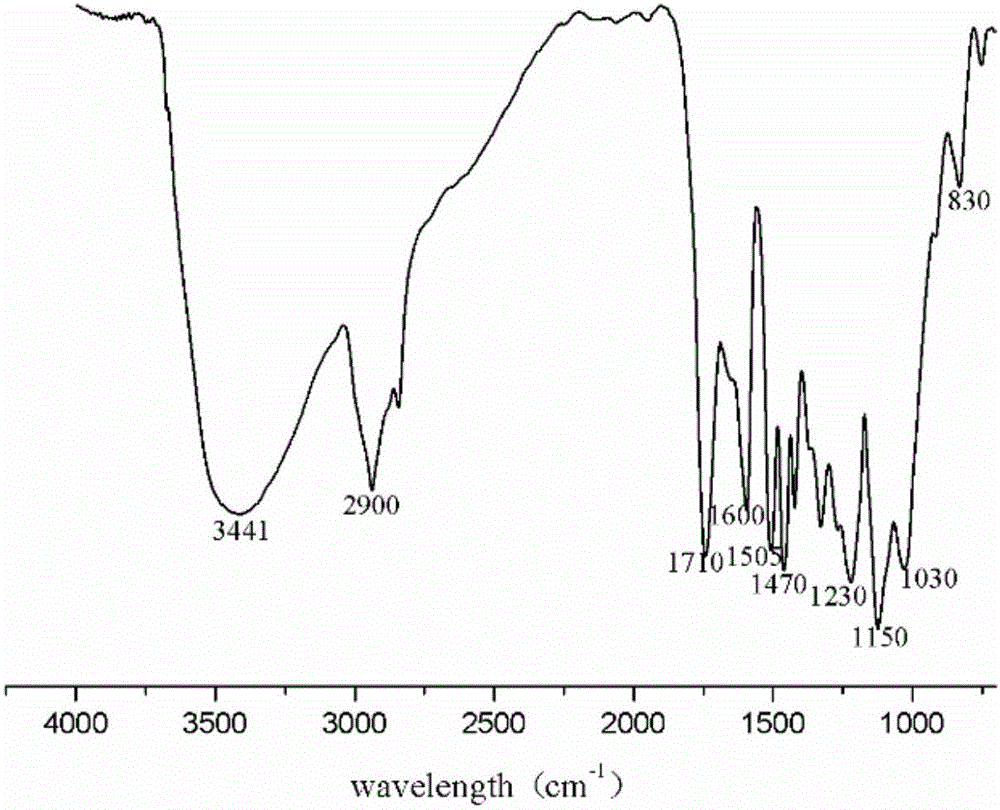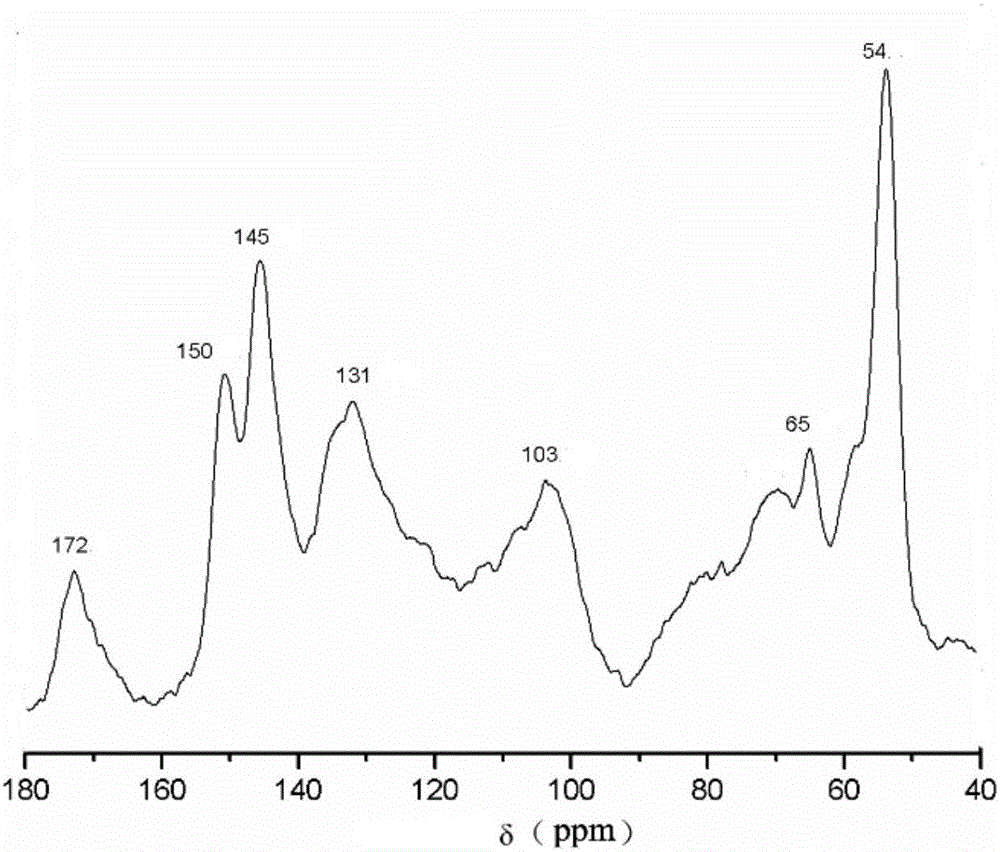Method for separating and extracting lignin from eucalyptus
A technology of lignin and eucalyptus, which is applied in the directions of lignin derivatives, chemical instruments and methods, organic chemistry, etc., can solve the problems of volatile toxicity, potential safety hazards, flammable organic solvents, etc. Fast processing and good structural integrity
- Summary
- Abstract
- Description
- Claims
- Application Information
AI Technical Summary
Problems solved by technology
Method used
Image
Examples
Embodiment 1
[0029] 1. A method for selectively separating lignin from eucalyptus, the specific steps are as follows:
[0030] 1) After the eucalyptus trunk is crushed, the 40-60 mesh powder is screened out, and dried in a vacuum drying oven at 100±5°C and 0.01Mpa;
[0031] 2) Add 1g of eucalyptus powder and 10g of DES (the molar ratio of TEBA to LA is 1:9) into the reaction kettle successively, shake properly to mix the solid-liquid two phases evenly;
[0032] 3) Start the reactor, control the reaction temperature to 90°C, fix the rotation speed to 100rpm, and react for 8 hours;
[0033] 4) After the reaction is completed, the reactant is cooled to room temperature, and the reaction product is taken out, and the Buchner funnel is used for vacuum filtration, and the residue is washed with ethanol, and the filtrate obtained by suction filtration is concentrated by rotary evaporation at 70±5°C and 0.02Mpa. liquid, and recover ethanol;
[0034] 5) Add 50ml of deionized water to the obtained...
Embodiment 2
[0040] 1. A method for selectively separating lignin from eucalyptus, the specific steps are as follows:
[0041] 1) After the eucalyptus trunk is crushed, the 40-60 mesh powder is screened out, and dried in a vacuum drying oven at 100±5°C and 0.01Mpa;
[0042] 2) Add 1g of eucalyptus powder and 30g of DES (TEBA to LA molar ratio 1:3) into the reaction kettle successively, and shake properly to mix the solid-liquid two phases evenly;
[0043] 3) Start the reactor, control the reaction temperature to 90°C, fix the rotation speed to 100rpm, and react for 8 hours;
[0044] 4) After the reaction is completed, the reactant is cooled to room temperature, and the reaction product is taken out, and the Buchner funnel is used for vacuum filtration, and the residue is washed with ethanol, and the filtrate obtained by suction filtration is concentrated by rotary evaporation at 70±5°C and 0.02Mpa. liquid, and recover ethanol;
[0045] 5) Add 150ml of deionized water to the obtained conc...
Embodiment 3
[0051] 1. A method for selectively separating lignin from eucalyptus, the specific steps are as follows:
[0052] 1) After the eucalyptus trunk is crushed, the 40-60 mesh powder is screened out, and dried in a vacuum drying oven at 100±5°C and 0.01Mpa;
[0053] 2) Add 1g of eucalyptus powder and 30g of DES (TEBA to LA molar ratio 1:9) into the reaction kettle successively, shake properly to mix the solid-liquid two phases evenly;
[0054] 3) Start the reactor, control the reaction temperature at 90°C, and set the speed at 100rpm, and react for 8 hours; 4) After the reaction, the reactant is cooled to room temperature, and the reaction product is taken out, and the reaction product is filtered under reduced pressure using a Buchner funnel, and the reaction product is washed with ethanol Wash the residue, perform rotary evaporation on the filtrate obtained by suction filtration at 70±5°C and 0.02Mpa to obtain a concentrated solution, and recover ethanol;
[0055] 5) Add 150ml o...
PUM
 Login to View More
Login to View More Abstract
Description
Claims
Application Information
 Login to View More
Login to View More - R&D Engineer
- R&D Manager
- IP Professional
- Industry Leading Data Capabilities
- Powerful AI technology
- Patent DNA Extraction
Browse by: Latest US Patents, China's latest patents, Technical Efficacy Thesaurus, Application Domain, Technology Topic, Popular Technical Reports.
© 2024 PatSnap. All rights reserved.Legal|Privacy policy|Modern Slavery Act Transparency Statement|Sitemap|About US| Contact US: help@patsnap.com









